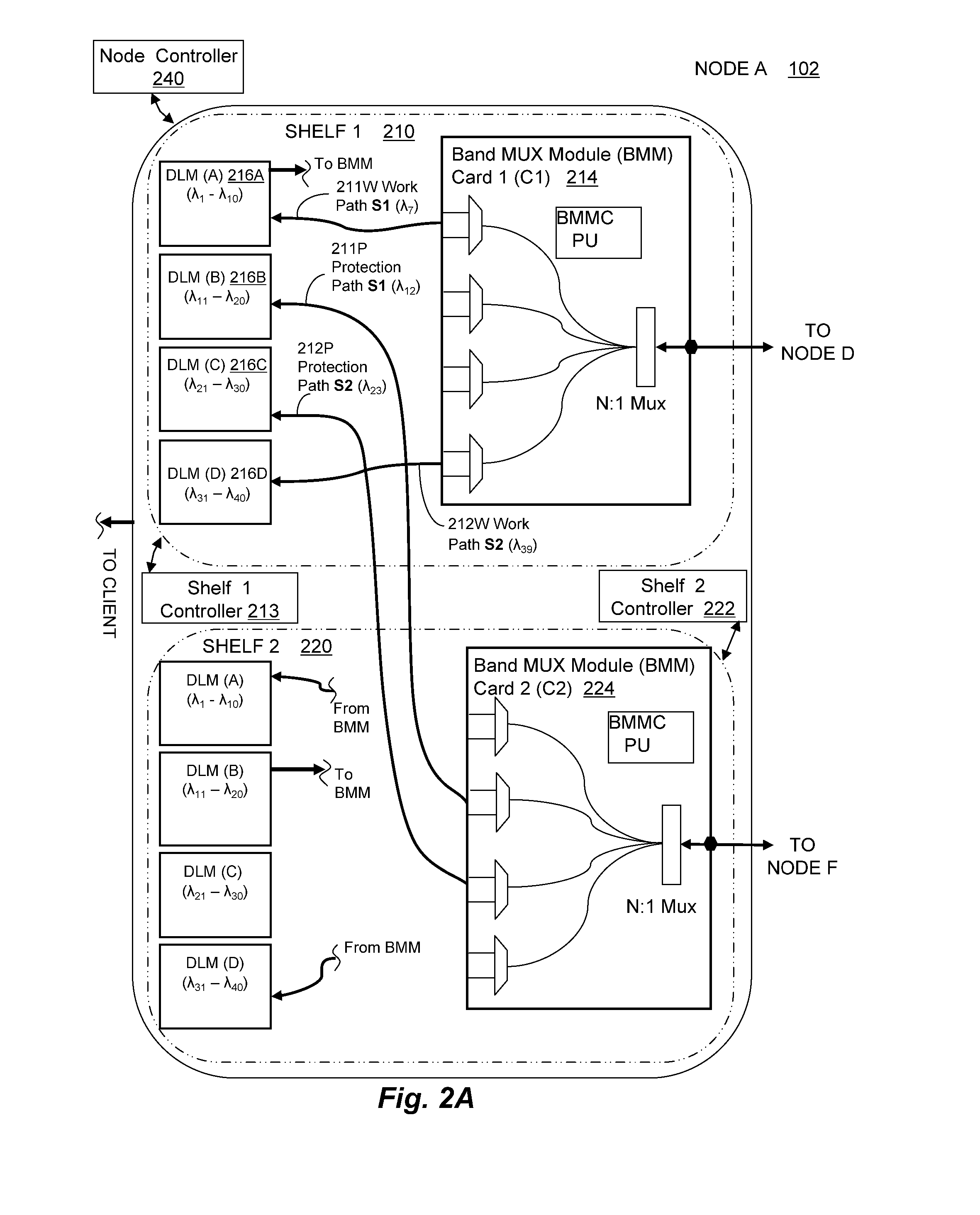Application of hardware-based mailboxes in network transceivers and distributed approach for predictable software-based protection switching
a software-based protection and mailbox technology, applied in data switching networks, multiplex communication, digital transmission, etc., can solve the problems of shared redundant routing that may suffer from longer switchover times, cost of consuming bandwidth, loss of potentially valuable data, etc., to achieve fast and reliable performance, reduce latency, and save host processor resources
- Summary
- Abstract
- Description
- Claims
- Application Information
AI Technical Summary
Benefits of technology
Problems solved by technology
Method used
Image
Examples
Embodiment Construction
[0022] Reference is first made to FIG. 1 that illustrates a communication network 100 utilizing protection paths, in which this invention may be employed. In FIG. 1, a signal to be transmitted between client AA at node A 102 to client BB at node B 104, via both a working path 110 through nodes C and D, and a redundant protection path 112 though nodes E and F.
[0023] Redundant paths are created at both nodes A 102 and B 104 by the use of a splitter 106A and 106B, respectively. Thus a given client signal is replicated and sent into the line card of the node for transmission over the working path and the protection path. Similarly a given client signal transmitted over multiple paths, e.g., the working path and protection path, is combined at a junction, e.g., via combiners 108A and 108B at nodes A and B respectively, either for egressing the network to a client, or for progressing from one node to the next within the same network. The node controls which of the received redundant path...
PUM
 Login to View More
Login to View More Abstract
Description
Claims
Application Information
 Login to View More
Login to View More - R&D
- Intellectual Property
- Life Sciences
- Materials
- Tech Scout
- Unparalleled Data Quality
- Higher Quality Content
- 60% Fewer Hallucinations
Browse by: Latest US Patents, China's latest patents, Technical Efficacy Thesaurus, Application Domain, Technology Topic, Popular Technical Reports.
© 2025 PatSnap. All rights reserved.Legal|Privacy policy|Modern Slavery Act Transparency Statement|Sitemap|About US| Contact US: help@patsnap.com



